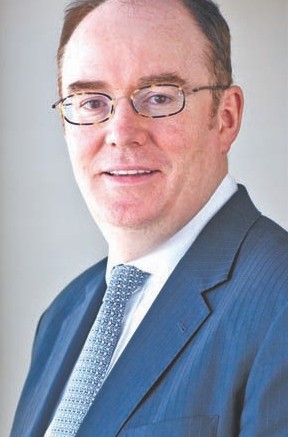The first super-cycle in modern times took place during the second half of the 19th century from 1870- 1913 and the second followed the Second World War until the early 1970s. Now the third super-cycle is upon us, Standard Chartered Bank argues in a new report.
The British financial services company claims the third super-cycle began in 2000 and describes the phenomenon as: “A period of historically high global growth, lasting a generation or more, driven by increasing trade, high rates of investment, urbanization and technological innovation, characterized by the emergence of large new economies, first seen in high catch-up growth rates across the emerging world.”
Chief economist and group head of global research Gerard Lyons concedes in a 152-page report that to talk of a third super-cycle may seem strange to some. And he notes that the current super-cycle “does not mean that growth is strong and continuous over the whole period — as the business cycle does still exist,” and explains that there will be winners and losers in terms of countries or regions.
He also maintains that there are major challenges ahead and there may be many shorter-term cycles in the wake of the financial crisis and “the consequences of deleveraging, rolling over debt repayments and restructuring balance sheets” at the same time as the world economy faces uncertainty about the “unknown consequences of present policy actions in the U.S.”
But Lyons argues that the long-term trend is clearly up and that the world economy has rebounded to its pre-recession levels and is now nearly twice the size it was a decade ago. (In 2000 the world economy was US$32 trillion and next year “based on conservative growth assumptions, this could rise to US$64.7 trillion,” he reckons.)
In his calculations the world economy will expand to US$308 trillion by 2030. In real terms (prices and currencies unchanged), that would work out to an annual average real growth rate of 3.5% from 2000 and 3.9% from 2010. By contrast, the average growth rate between 1973 and 2000 was 2.8%.
The breakdown for different countries and regions would look something like this, he writes: In the U.S. the economy will grow 2.6% in 2010, 1.9% in 2011, 2.7% in 2012, then grow “at a stronger pace with trend growth of 2.5% over the horizon to 2030.” In the the EU-27, Lyons anticipates 1.8% growth this year, 1.7% in 2011 and 2.2% in 2012, “reflecting a sluggish recovery from the crisis with large output gaps and stubborn unemployment.” Over the forecast horizon to 2030, the EU-27 should grow by 2.5%, Lyons predicts. For Japan, growth figures will be 1.5% in 2010, 1.0% in 2011, and just under 2.0% in 2012, with 1.0% over the forecast horizon to 2030.
China and India, of course, present a very different picture of growth, with the former growing at a forecast of 10% in 2010, 8.5% in 2011, and 8% for 2012, averaging 6.9% over the 20 years to 2030. India’s growth will be higher, Lyons predicts, growing at 8.1% in 2010, 8.5% in 2011 and 8.8% in 2012, and averaging 9.3% over the forecast horizon.
“The shift in the balance of power is already evident in terms of where global growth is going to come from,” he explains. “Emerging economies, which account for about one-third of the global economy, are currently responsible for two-thirds of its growth.
“We see significant near-term business cycles in an upward trend, driven by the emerging world,” he notes.
Lyons points out that increases in consumer spending in China will overtake the United States by 2017- 18 in U.S. dollar terms. That assumes nominal consumer spending growth in China of 11% and 4% in the U.S.
Income per head in China could increase from US$4,166 in 2010 to US$21,420, he maintains while in India it could rise from US$1,164 in 2010 to US$7,380 by 2030. In Latin America the corresponding figures could move from US$7,114 to US$14,608 and in sub-Saharan Africa from US$1,075 to US$2,780.
“The concept of a super-cycle builds on a major theme. . . namely a New World Order,” he writes, which reflects “a shift in the balance of economic and financial power, from the West to the East.”
In the first super-cycle, emerging economies accounted for 20% of global growth, Lyons adds, a figure that rose to 28% in the second super- cycle. This figure will grow to 68% of the pick-up in the world economy by 2030, he asserts.
“In our view China is currently experiencing an industrial revolution,” he says, while the economies of India and Indonesia are opening up too.
Moreover, many of those emerging economies are going to be incorporated into global trade including increased trade between emerging economies (South-South trade).
Other factors driving the super-cycle will include population growth (the UN expects the world population to grow from 6.9 billion to 8.3 billion by 2030); growth of the middle class (more than four-fifths of the population is in the emerging economies); high rates of savings and investment; technological innovation; and the development of financial markets.
Growing middle classes and urbanization will drive commodity demand, the report concludes.
“Supply constraints in metals and coal will create dramatic price spikes,” the report states. “Commodity producers should be big winners as consumers pay more.”


Be the first to comment on "The third super-cycle is here, Standard Chartered says"